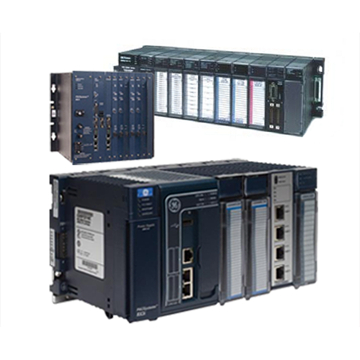Unlocking the Secrets of Siemens Simatic S5: Your Ultimate Guide to Industrial Automation Mastery!
The Siemens Simatic S5 series has long been a cornerstone of industrial automation, revolutionizing the way processes are controlled and monitored. Introduced in the late 1970s, this programmable logic controller (PLC) series has gained a reputation for reliability, flexibility, and ease of use. As industries evolve and technology advances, understanding the specifications, features, and applications of the S5 series becomes increasingly essential for professionals looking to enhance operational efficiency. In this article, we will delve deep into the Siemens Simatic S5 series, uncovering its historical significance and examining how it continues to play a vital role in modern automation systems.

Overview of Siemens Simatic S5 Series
The Siemens Simatic S5 series made its debut in 1979, marking a significant milestone in the field of industrial automation. It was designed to provide a flexible and programmable solution for controlling machinery and processes across various industries. Over the years, the S5 series evolved, introducing several models that catered to different automation needs, from small-scale applications to complex systems in large manufacturing plants. The S5's architecture facilitated seamless integration with other components, allowing for multi-tiered automation setups. Its reliability and robust performance quickly established it as a preferred choice among engineers and technicians. As technology progressed, the S5 series paved the way for newer generations of Siemens PLCs, but its legacy continues to influence modern automation practices. Many professionals who worked with the S5 have fond memories of troubleshooting and optimizing systems, sharing stories of how it helped streamline operations and improve productivity in their respective fields.
Specifications of Siemens Simatic S5
The Siemens Simatic S5 series boasts a range of specifications that cater to various industrial applications. At its core, the S5 series includes models with different processing capacities, ranging from the compact S5-95U to the more powerful S5-155. These PLCs are equipped with a modular design, allowing users to customize their systems with various input/output (I/O) modules, communication processors, and expansion units. The S5 series can handle a variety of programming languages, including Ladder Logic and Statement List, giving engineers the flexibility to choose the most suitable method for their projects. Additionally, the S5 controllers feature exceptional processing speed and memory capacity, enabling them to manage complex tasks efficiently. A friend of mine, who spent years working in a manufacturing plant, often reminisces about the thrill of programming the S5 to automate intricate assembly line processes, appreciating the immediate impact of their work on overall production efficiency.
Features of Siemens Simatic S5
The Siemens Simatic S5 series is distinguished by several standout features that enhance its usability and effectiveness in automation processes. One notable feature is its versatility, as the S5 can be employed in diverse applications, from simple control tasks to complex process automation. The user-friendly programming environment allows engineers to develop and modify programs with ease, making it accessible even to those new to PLC programming. Furthermore, the S5 series supports various communication protocols, enabling it to integrate seamlessly with other devices and systems within an industrial network. This interoperability is essential for creating cohesive automation solutions. Additionally, the robust diagnostic tools incorporated into the S5 series facilitate troubleshooting, significantly reducing downtime. A colleague of mine once shared how the S5's diagnostic features helped their team quickly identify and rectify issues in a production line, ultimately saving both time and resources.
Applications of Siemens Simatic S5 in Industrial Automation
The applications of the Siemens Simatic S5 series in industrial automation are vast and varied, spanning multiple sectors. In manufacturing, for instance, the S5 controllers are employed to automate assembly lines, ensuring consistent product quality and enhancing throughput. In the food and beverage industry, the S5 series is used to monitor and control processes such as bottling and packaging, where precision is crucial. Additionally, the S5 can be found in water treatment facilities, where it monitors equipment and processes to ensure efficient operation. Case studies highlight the successful implementation of the S5 in automotive manufacturing plants, where it played a pivotal role in streamlining operations and reducing waste. Personal anecdotes from professionals in these sectors often reveal how the S5 has not only improved efficiency but has also empowered teams to innovate and adapt to changing market demands.
For more in-depth information on the series, you can explore the Siemens Simatic S5 series and its impact on modern automation.
Significance of the Siemens Simatic S5 Series
In conclusion, the Siemens Simatic S5 series has established itself as a fundamental component of industrial automation, offering a rich history of innovation and reliability. Its specifications and features make it a versatile choice for a wide range of applications, from manufacturing to process control. As industries continue to evolve, understanding the capabilities and applications of the S5 series will be crucial for professionals aiming to enhance their automation strategies. Whether you're a seasoned engineer or just beginning your journey in industrial automation, exploring the Siemens Simatic S5 series can provide valuable insights and opportunities for growth. Embrace the legacy of the S5 and consider how its principles can inform your approach to modern automation challenges.







Comments